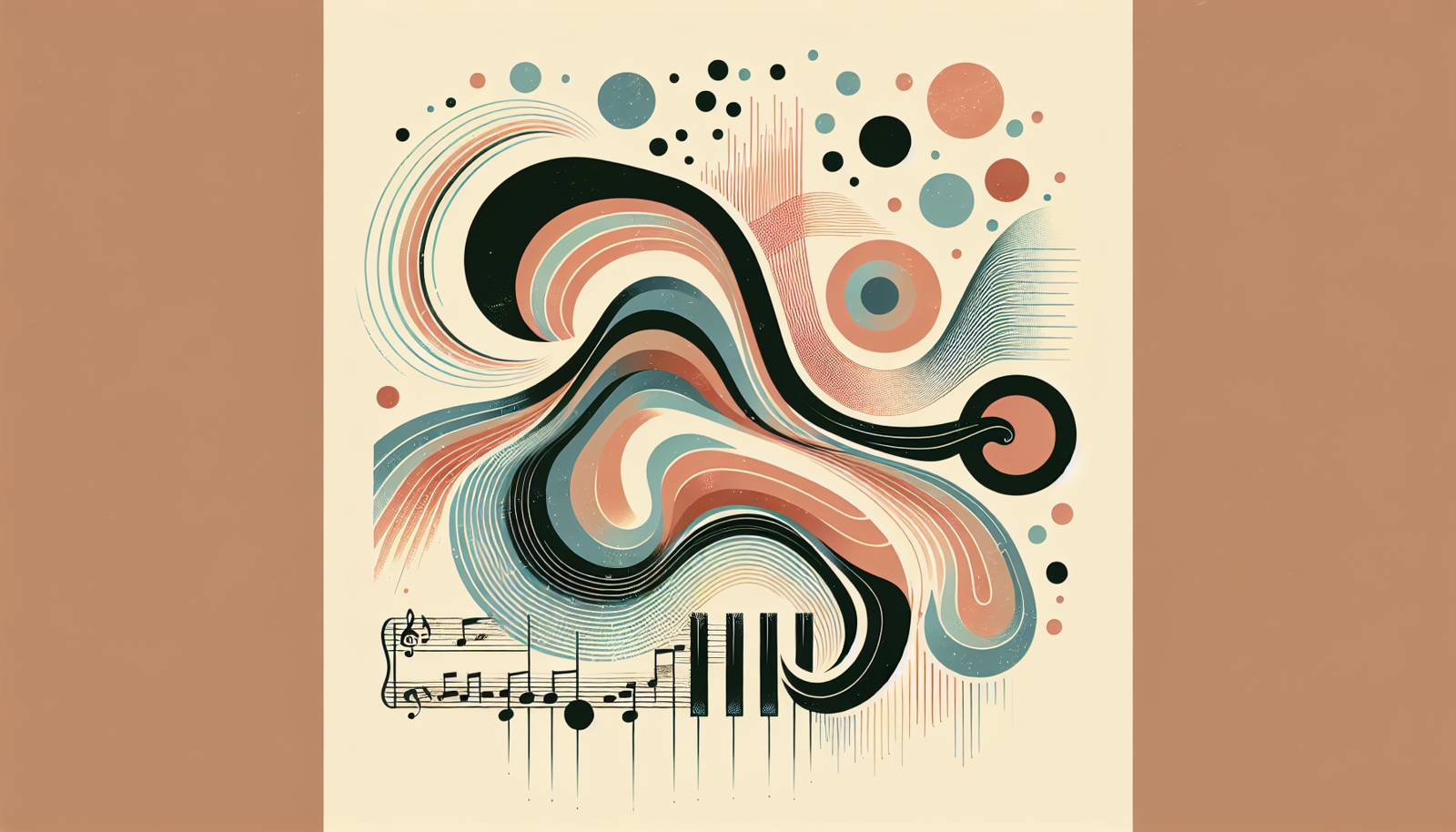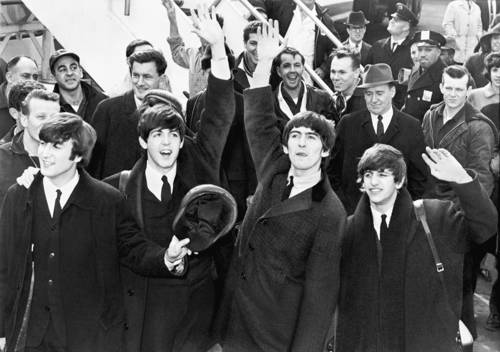
FAQ About The Role of Beat Music in 1960s Cultural Revolution

What is Beat music, and how did it originate?
Beat music, also known as Merseybeat in the UK, is a genre of rock and roll that originated in the early 1960s. It combines elements of rock and roll, rhythm and blues, and skiffle. The style emerged from Liverpool and surrounding areas, heavily influenced by American rock and roll artists of the 1950s and early 1960s. Pioneering bands like The Beatles, Gerry and the Pacemakers, and The Searchers were at the forefront of this musical style, which later played a significant role in defining the cultural landscape of the 1960s.

How did Beat music influence fashion in the 1960s?
Beat music had a profound impact on 1960s fashion, particularly among young people. Musicians and fans adopted a distinctive style that included slim-fitting suits, Chelsea boots, and mop-top hairstyles, defined by bands like The Beatles and The Rolling Stones. This fashion was seen as a rebellion against conservative styles, embodying the youthful energy and desire for change that characterized the 1960s cultural revolution.

In what ways did Beat music contribute to youth rebellion during the 1960s?
Beat music played a crucial role in youth rebellion by providing a soundtrack to the social and political upheavals of the 1960s. Its energetic style and often subversive lyrics resonated with young people who were dissatisfied with the status quo. Music by Beat artists challenged traditional norms, encouraging youths to question authority and express individuality, which became central themes during this era.

Who were some significant artists in the Beat music scene?
The Beat music scene was spearheaded by several influential artists, with The Beatles being the most notable. Their innovative sounds and global popularity defined the genre. Other significant artists included The Rolling Stones, The Who, and The Kinks, who all contributed unique styles that resonated with the cultural and social changes of the time.

What role did Beat music play in artistic expression during the 1960s?
Beat music fostered a new wave of artistic expression by merging music with other cultural forms such as art, film, and literature. This genre's influence extended beyond just sound; it became a central motif in the decade's broader countercultural movement. The experimental nature of Beat music inspired artists to explore bold and innovative ideas, leading to a more liberated and expressive form of art.

How did Beat music help in shaping global culture during the 1960s?
Beat music was a catalytic force in shaping global culture during the 1960s by transcending geographic and cultural barriers. The global success of bands like The Beatles and The Rolling Stones introduced elements of Western youth culture worldwide, influencing lifestyles, fashion, and values. This movement facilitated international dialogue among young people, contributing to a more connected and unified global cultural identity.

What was the Merseybeat scene, and why was it important?
The Merseybeat scene refers to the music scene in Liverpool, England, during the early 1960s that centered around Beat music. It was vital because it produced some of the most iconic bands of the era, including The Beatles, Gerry and the Pacemakers, and The Searchers. The scene's importance lies in its role as a launching pad for Beat music, which went on to influence cultural and musical directions not just in the UK, but globally.

Can you explain the connection between Beat music and the counterculture movement?
Beat music is intrinsically linked to the counterculture movement of the 1960s. It embodied the spirit of rebellion and change, challenging conventional social norms. The music provided a platform for themes of peace, love, and freedom, which were central to the countercultural ethos. Songs often addressed issues like civil rights, anti-war sentiments, and generational change, resonating with the ideals of the counterculture and amplifying its messages across society.

What impact did Beat music have on the music industry?
Beat music revolutionized the music industry by popularizing new production techniques and fostering a global music market. Its innovative approaches, such as the use of multi-track recording and experimentation with song structures, paved the way for future genres. The commercial success of Beat bands also highlighted the potential of global distribution, changing how music was marketed and consumed.

How did Beat music influence other musical genres?
Beat music significantly influenced other musical genres by merging rock and roll with rhythm and blues, laying the groundwork for genres like pop, rock, and later subgenres such as punk and alternative rock. The emphasis on rhythm, catchy hooks, and harmony influenced the development of pop music, while its rebellious spirit provided a blueprint for more aggressive rock styles that emerged in subsequent decades.

What were some major Beat music albums that defined the 1960s cultural landscape?
Several major albums defined the Beat music genre and shaped the cultural landscape of the 1960s. Notable albums include The Beatles' "Please Please Me" (1963) and "A Hard Day's Night" (1964), The Rolling Stones' "Out of Our Heads" (1965), and The Who's "My Generation" (1965). These albums encapsulated the revolutionary spirit of the era and influenced countless musicians and fans around the world.

How did Beat music influence the social dynamics of the 1960s?
Beat music influenced social dynamics by breaking down barriers between different social classes and generations. It provided a common cultural touchstone for young people from diverse backgrounds, uniting them in a shared musical experience. The genre's emphasis on themes like love and peace encouraged social discourse and contributed to the progressive social changes occurring during the decade.

Were there any controversies associated with Beat music in the 1960s?
Yes, Beat music often faced controversy due to its challenge to traditional societal norms and its association with youth rebellion. Critics accused it of promoting immorality and undermining authority, and it was sometimes banned by conservative media outlets. Despite this, or perhaps because of it, Beat music's popularity soared, underscoring its role in the cultural shifts of the time.

What were some key characteristics of Beat music?
Key characteristics of Beat music include strong melodic hooks, simple yet effective instrumentation, and harmonized vocals. The genre often features a steady rhythm driven by guitars and drums, complemented by energetic and youthful performances. Its straightforward yet impactful structure made it accessible and appealing to a wide audience, fueling its popularity during the 1960s.

How did the British Invasion relate to Beat music?
The British Invasion refers to the widespread popularity of British music acts in the United States during the mid-1960s. Beat music was a cornerstone of this movement, with The Beatles leading the way. The British Invasion brought Beat music to a global audience, significantly impacting music and culture in the United States and beyond, introducing British fashion, attitudes, and slang to American youth culture.

How did Beat music contribute to the evolution of live performances?
Beat music transformed live performances by emphasizing showmanship and energy, setting a new standard for live music events. Artists like The Beatles and The Rolling Stones were known for their charismatic stage presence and audience interaction, inspiring future generations of performers. These live shows not only entertained but also cultivated a communal experience among audiences, helping solidify fanbases and expand the reach of Beat music.

Did Beat music face criticism from traditional music critics?
Yes, Beat music initially faced skepticism and criticism from traditional music critics who often labeled it as simplistic or juvenile. As the genre evolved and demonstrated its influence on culture and music production techniques, it gradually garnered respect within the music industry. The initial criticisms highlight the generational and cultural divide of the time, with younger audiences embracing the freshness of Beat music as a break from conventional norms.

How did technology influence the sound of Beat music?
Technology played a significant role in shaping the sound of Beat music. The development of multi-track recording allowed artists to experiment with layered sounds and effects, which enriched the production quality of records. Innovations such as electric guitars and amplifiers enabled louder and more dynamic performances, both in studio recordings and live concerts, contributing to the genre's distinct and forward-thinking sound.

What lasting impacts did Beat music leave on modern music?
Beat music left several lasting impacts on modern music. It laid the foundation for the globalization of popular music, demonstrated the power of music as a vehicle for cultural change, and influenced numerous artists across a variety of genres. Its focus on catchy melodies and harmonies remains a staple in pop music, while its spirit of innovation encourages artists to continually push creative boundaries.

How did Beat music affect the identity and lifestyle of the 1960s youth?
Beat music played a crucial role in shaping the identity and lifestyle of 1960s youth by providing them with a means of expression and an identity separate from previous generations. It encouraged new fashions, attitudes, and values centered around freedom, creativity, and rebellion. The music's themes supported youthful optimism and a sense of belonging within a vibrant, emerging global community.
